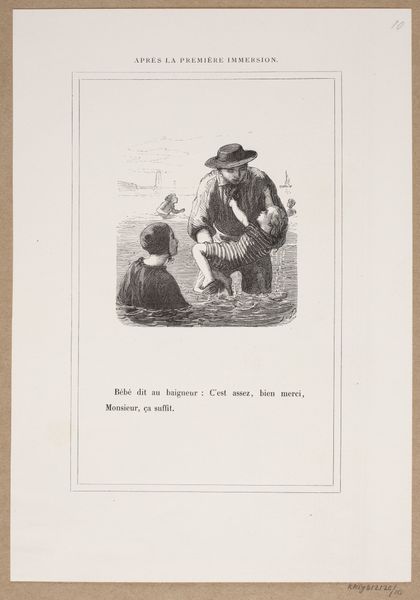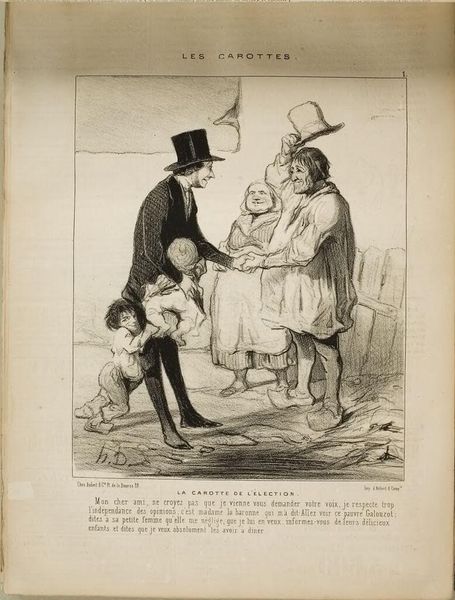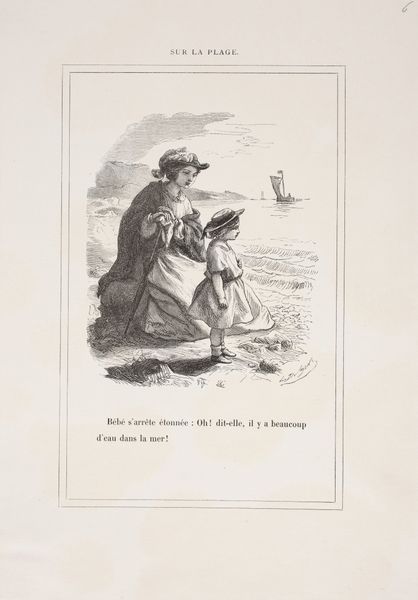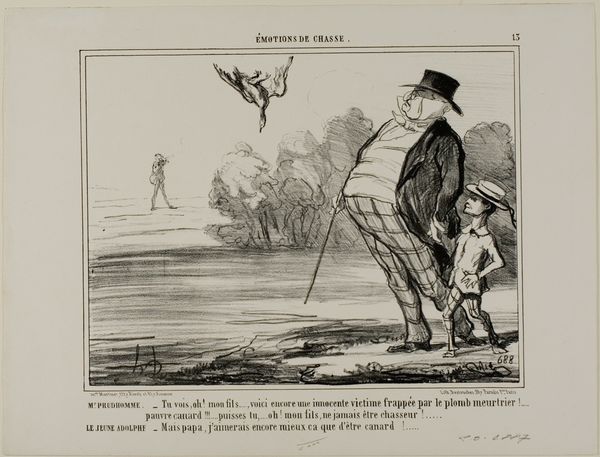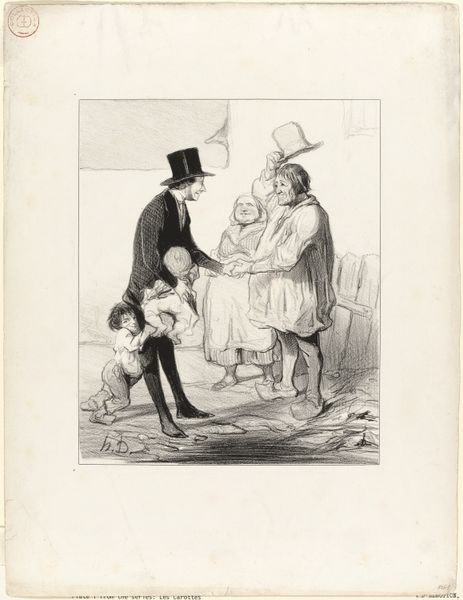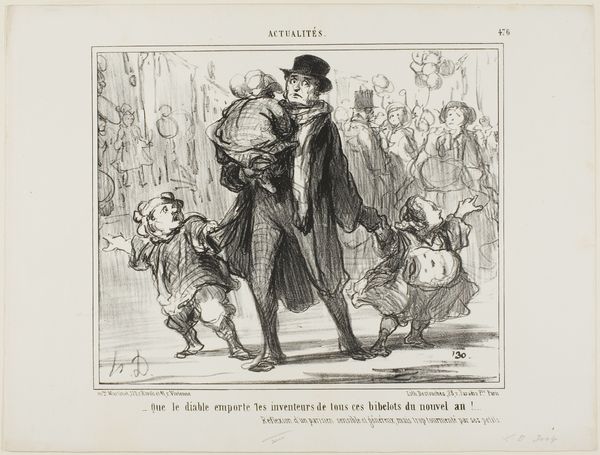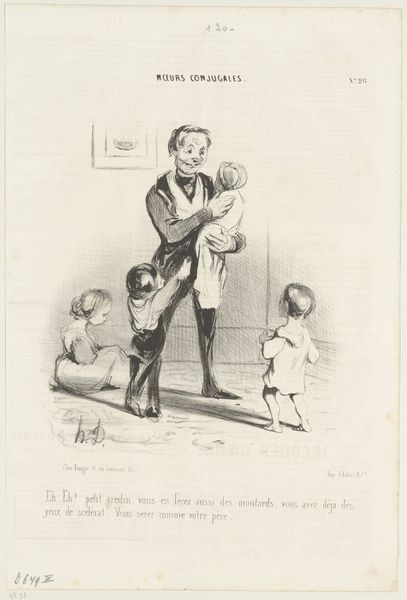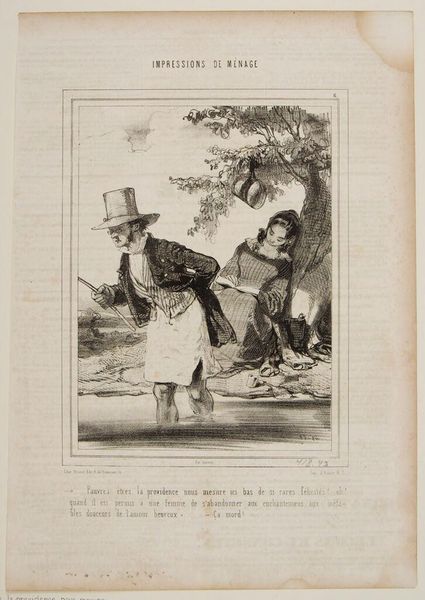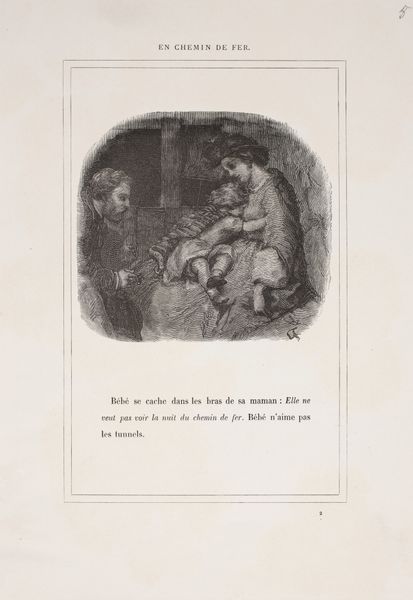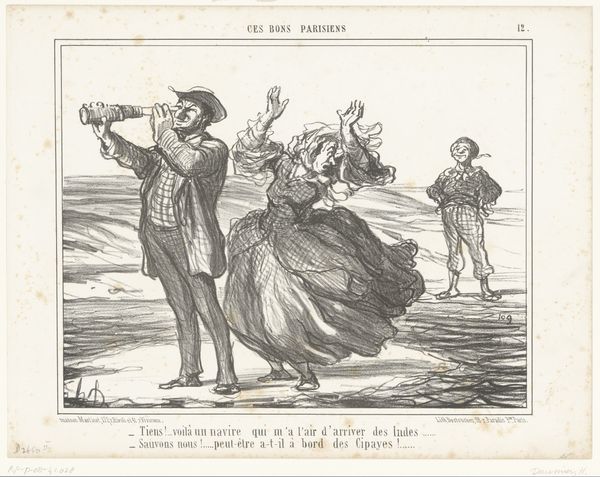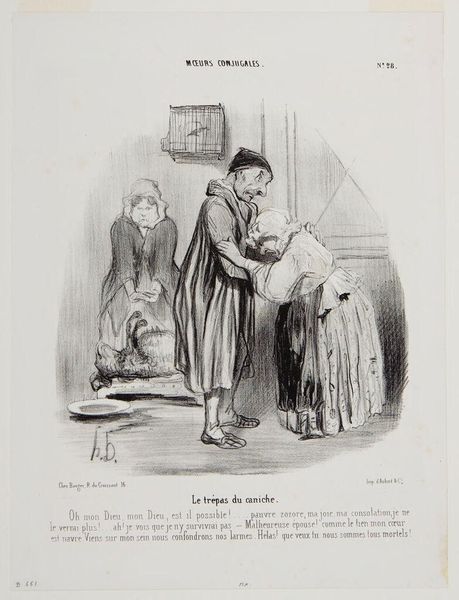
print, woodcut
# print
#
woodcut
#
genre-painting
Dimensions: 275 mm (height) x 190 mm (width) (bladmaal)
Editor: We’re looking at “Le dernier bain,” or "The Last Bath," a woodcut print by Lorenz Frølich from 1863. It’s got this delicate, almost nostalgic feeling… you see a mother figure guiding a child into the water. What stands out to you about this piece? Curator: It's fascinating to consider the materiality of this image. As a woodcut print, its production demanded both skilled labor and specific materials: the wood block itself, the cutting tools, the paper, the ink. Consider how Frølich’s choice of this readily accessible medium might have impacted the audience who encountered this scene of bourgeois leisure. The act of consumption is key. Editor: Consumption as in… buying the print? Or viewing it? Curator: Both, perhaps! This was a mass-produced image designed for circulation. Think about where it might have been displayed, how it might have contributed to the construction of social ideals around motherhood, childhood, and access to leisure. Is this a depiction of simple enjoyment, or something else? Editor: Hmmm, something else. There’s the text as well. A "courageous" baby is wading into the sea... it almost feels aspirational, a demonstration of middle-class values made accessible through printed form. But who had access to those ideals? Curator: Exactly. And that is where we question the accessibility of the materials, techniques and imagery presented within the piece. The material reality shapes our understanding of the social message. How might the process of its creation influence the content conveyed? Editor: I see. Thinking about it as a crafted object, not just a scene, changes everything. Thanks for pointing that out! Curator: My pleasure. Examining art through its materiality invites a deeper exploration of how social messages are created and circulated.
Comments
No comments
Be the first to comment and join the conversation on the ultimate creative platform.

